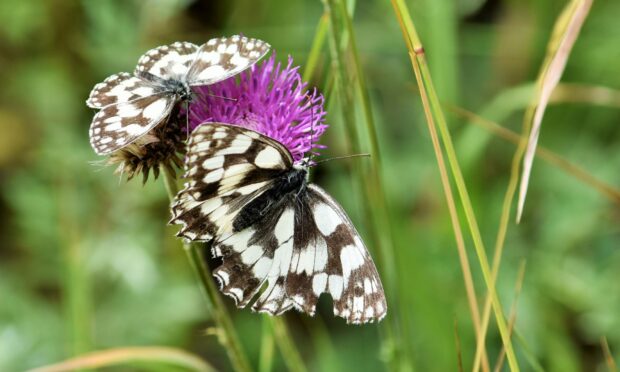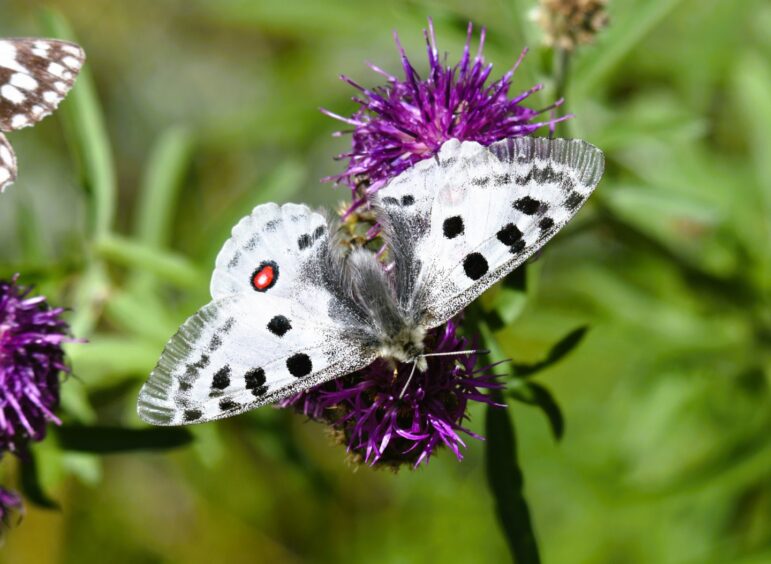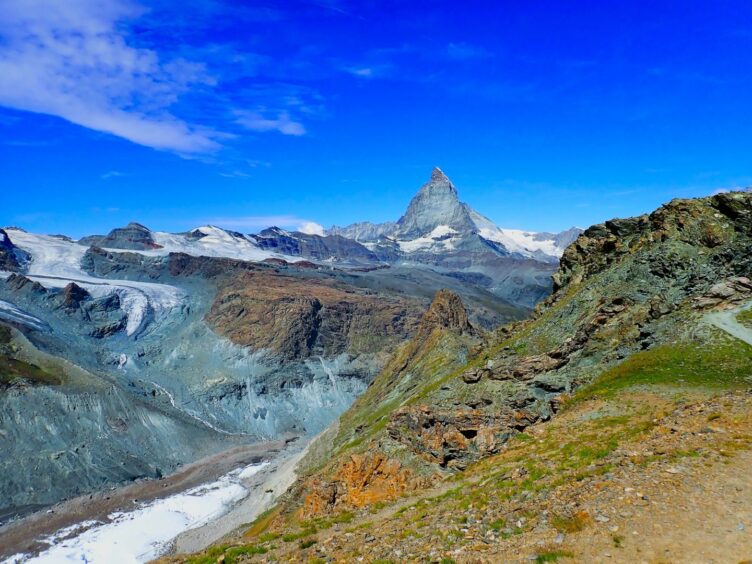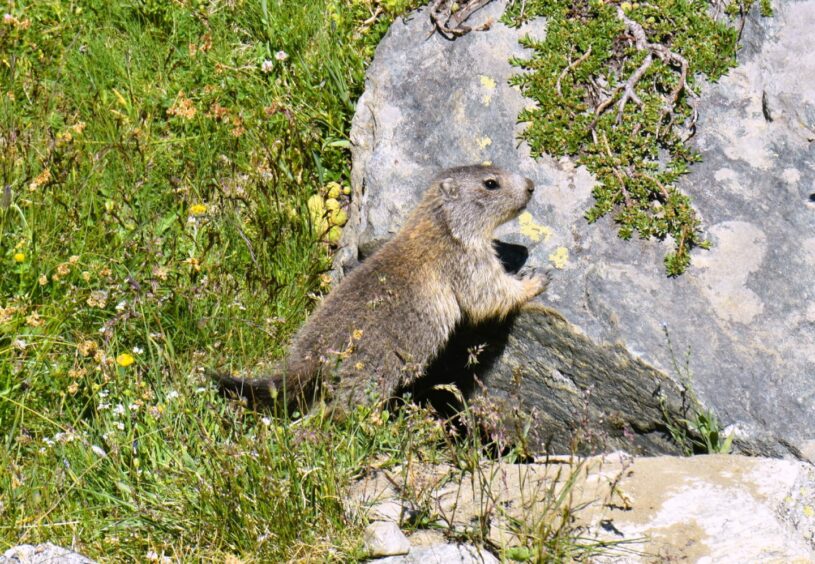This was paradise found – an Alpine meadow where a proliferation of butterflies floated on haphazard wings as they eagerly sought out the rich nectar from a flourish of knapweed.
There were marbled whites, dark green fritillaries, high brown fritillaries and Scotch arguses, and several others that were challenging to identify.
The fritillaries and blue butterflies were especially difficult to tell apart because several species occur in this part of Switzerland, yet have outward differences that are subtle, and which need the eye of an expert.
As someone who likes to know what things are, this was mighty frustrating, but I quickly pushed such angst aside when an apollo butterfly glided past me on large, outstretched wings.
Apollos are easy to identify because of their impressive size, combined with pale, iridescent wings marked with coloured circles.
Apollo was the god of sun and light, music and poetry, healing, prophecy and knowledge, and so much more – an embodiment of harmony, reason and moderation.
As such, apollo seemed an entirely appropriate name to bestow upon this beautiful butterfly, and I sat on the ground for a while, revelling in their exquisite grace as they glided past me.
Great heights
Earlier that day, I had ventured to a much higher meadow nestled in the shadow of the Matterhorn.
Here, I stumbled upon a family of marmots, with the mother lying by her burrow as she kept a close eye on a couple of her youngsters as they gambolled nearby.
Marmots are intriguing creatures, large rodents that only have around 140 days of activity per year before the cold and snowy alpine winter sends them into hibernation.
It is a short time for the marmots to build up the necessary fat reserves to see them through winter.
Immediately after coming out of hibernation, marmots eat all kinds of young shoots.
As the choice of food available increases, they specialise in eating certain plants, including alpine clover, milk-vetch, and alpine lovage, which are especially rich in essential fatty acids.
The more of these fatty acids a marmot can store, the lower the body temperature it can endure during hibernation.
Marmots are endearingly noisy, and their echoing cries are omnipresent in many parts of the Alps.
In marmot-speak, a loud whistling single cry means “great danger”, a series of cries means “watch out, danger is approaching”.
Effective communication
It is an effective means of communication, resulting in a chain reaction of calls cascading down a valley as each marmot family passes along the alarm signal.
The inspiring scenery and multitude of wildflowers and creatures make the Alps one of the world’s magical places.
However, behind the stunning environment lie warning signs that all is not well.
One day, I hiked to the Gorner Glacier, which I had last visited only a few years previously, but over that short period, the glacier had noticeably shrunk by at least 30 metres, perhaps more.
The cruel hand of global warming is tightening its grip upon the Alps, and the consequences are potentially devastating.














Conversation